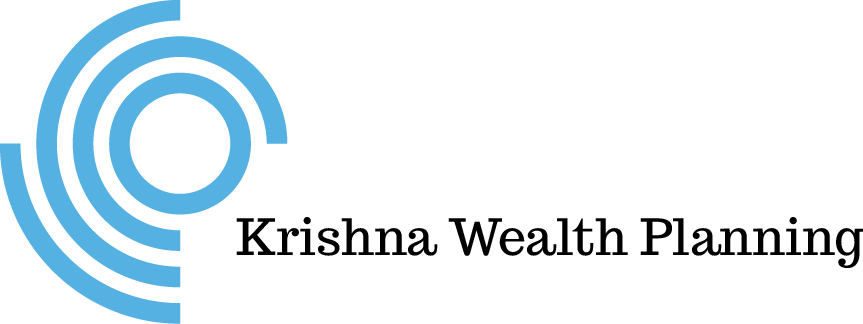10-Minute Read
What is a great college planning outcome? I think it looks something like this. Your children graduate from respectable college institutions. They go on to start satisfying and well-paid careers. Student loans payments after graduation are manageable or ideally non-existent. You as a parent helped finance their educations the best you could while not allowing your own long-term financial goals to get derailed.
If you have college bound children, does this scenario sound like the path you’re on? If the answer is no or you’re unsure, this piece explores the challenges and opportunities of late-stage college planning. You may find ideas to improve your own family’s college investment process.
The Challenges of Late-Stage College Planning
If you have young children where college is many years away, your focus is likely to be early-stage planning. It’s never too early to get started; perhaps your top priority will be to open and fund a college savings 529 plan.
But what do you do if the college decision is looming for one of your children? This is the territory of late-stage college planning. There’s likely a complex and time-consuming process ahead. Your action list may include:
- Pre-Application Tasks
- Conversations with other parents, high school counselors and perhaps even dedicated college counselors
- Supporting your child as they prepare and complete key exams (e.g., SAT, ACT)
- Deciding the major your child will pursue
- Determining what type of school where your child is most likely to thrive (e.g., university, community college, trade school)
- Building a short (or long) list of colleges and planning campus visits
- Application-Related Tasks
- Getting familiar with application deadlines for colleges and the financial aid process
- Deciding if it’s worth pursuing early action or early decision for the colleges on your list
- Writing Excellent Essays and submitting applications on time
If these weren’t enough items to worry about, you might be surprised to learn you cannot simply shop for college the same way you might shop for other purchases. For starters, the sticker price you see on a college’s website might not be the cost you pay. More on that in the next section.
Here’s another challenge that may seem obvious: the price you pay for college has a strong link to how much student loans your children graduate with. A child graduating with $25,000 of student loans might face a monthly payoff obligation of $278 (assuming a 10-year payoff at 6 percent interest). That might be quite reasonable based on the type of career and income trajectory expected after graduation.
A child graduating with $100,000 of student loans faces four times that monthly payoff obligation of around $1,110. Now it’s starting to look like a mortgage payment but without a house to show for it! Then there are some degree programs (e.g., Medical, Law) where it has become quite common for graduates to have loans exceeding $200,000!
Remember that colleges are businesses. You’re making an investment in your children and hope to see a return on that investment. Like many investment opportunities, they’re not all created equal. If the student loan crisis is to end, it probably starts by us all becoming better shoppers for college. No easy task, but it is possible. Let’s start to see how.
The Opportunities of Late-Stage College Planning
The good news is that the price you pay for college might not be nearly as much as the sticker price. There are two broad types of financial aid that could lower your net cost. Let’s look at these in turn.
Need-Based Financial Aid
What is your financial need to begin with? It turns out there’s a common method to compute this figure regardless of what financial assistance you think you need.
Financial need is the cost of attendance (COA) of a given college minus your “expected family contribution” or EFC.
The EFC is formula-based number that you’ll learn shortly after you submit the Free Application for Federal Student Aid (FAFSA®). You complete the FAFSA® for each year your child is in college.
Without getting into all the details behind the EFC calculation, just know that it is heavily dependent on the household income you report along with your liquid net worth; that is assets not held in retirement accounts or the equity in your personal residence. Also, income and assets for students are assessed at a higher rate than the parents.
If you have multiple kids in college at the same time, EFC reduces for those overlap years. However, this treatment is subject to change for the 2023-24 school year. Even the term EFC looks like it will eventually disappear, but we’ll maintain the term for the rest of this piece.
Basically, you’re considered a “need-based” family if the cost of attendance (COA) for your desired college exceeds your expected family contribution (EFC). If this applies to you, you have two broad strategies to consider:
- Search for colleges that cover at or near 100% of your need (possible with diligent online research or access to the right tools/advice)
- Take action to reduce your EFC
Ways to Reduce Your Family’s EFC
First a warning. Just because you can reduce EFC doesn’t mean you should. This needs to be considered in the broad context of your financial plan. Here are just a few ideas:
- Reduce your assessable assets for EFC:
- Pay off high interest debt (e.g., credit cards). Cash available is counted for FAFSA so paying off debt with such cash could be considered.
- If you have an outstanding mortgage balance, pay down the principal. Home equity is not counted for FAFSA.
- Fund traditional IRAs, Roth IRAs and/or qualified plans at work if they are available. Retirement assets are not counted for FAFSA.
- Reduce assessable income for EFC:
- While you probably don’t want to purposely reduce wage or business income, if a reduction in income was expected during your children’s college years, then keep in mind that you may not have a low EFC in year one of college, but you might in later years. The income determined for FAFSA has a two-year lag because it is based on your tax return.
- Liquidate grandparent-owned 529 plans in later years to avoid the income being counted or consider shifting ownership of such plans to the parent’s name.
Finally, it’s worth noting that not all colleges rely exclusively on the FAFSA for determining your EFC. For example, many use the CSS Profile instead.
It’s important to note that an alternative method of determining your EFC won’t necessarily work exactly like the FAFSA. In other words, a strategy used to reduce your EFC for FAFSA may not be effective for the CSS Profile. A bit confusing, right? You simply must be aware of the caveats that apply to the specific colleges on your short list!
Merit-Based Financial Aid
This second type of aid becomes the focus if you do not qualify for need-based aid. In other words, your expected family contribution (EFC) is larger than the cost of attendance (COA).
In this case, you may want to explore what colleges provide non-need-based aid. This also goes by the name of merit-based aid or merit-based scholarships. How much benefit received will depend to large extent on your child’s aptitude and willing to work, especially in the high school years before applications start.
Keep in mind that most scholarships are awarded directly from the college institutions themselves. But there are also private scholarships out there if you’re willing to do the leg work. Here we’ll focus on the institutional awards.
Why would colleges even provide merit-based aid? For one, many simply can. They may have large endowment funds that can be allocated at their discretion. For some colleges, it’s a matter of staying competitive. A merit-based aid award essentially becomes discounting program used to incentivize students that may be fielding award offers from multiple schools.
In any event, the type of merit-based scholarships offered by colleges can vary. Some offer “grid based” scholarships. This means if you’re admitted and meet certain requirements (e.g., minimum level of GPA and test scores), you’re automatically awarded a scholarship.
Other colleges have competitive scholarships which are tougher to get. Along with meeting minimum academic marks, you’re truly competing against a pool of other students. Things like essays and interviews may be needed just to have a shot.
Now to the point that you might miss if you’re not paying close attention. Different colleges cover widely different dollar amounts of merit-based aid. Some do not offer any merit aid and if they do, it’s extremely selective. If such a college is your preference, plan on paying the sticker price.
If you’re starting the college shopping process and know you won’t qualify for need based aid, wouldn’t it be nice to know what colleges even offer a discounting program? It’s worth doing the research. Fun fact: Ivy league institutions like Harvard and Yale simply don’t provide any merit-based aid. The aid they do disburse is exclusively for need-based families.
Tax Strategies with College Planning
While not a direct form of financial aid, paying for college expenses could provide opportunities for tax savings. Borrowing a term used by college planning expert Joe Messinger, you might try to create your own “tax scholarship.” While we won’t get too deep, here are three tax planning areas to consider.
American Opportunity Tax Credit (AOTC)
This tax credit offers up to $2,500 per year for each eligible student in your household. As it applies for the first four years of higher education, the maximum total credit is $10,000.
Income limits do apply here. To claim at least a partial credit, you must have a modified adjusted gross income (MAGI) of less than $180,000 if married and $90,000 if single. You may want to engage in strategies to keep your MAGI under these limits if you expect to be close to these thresholds.
Some care is needed to properly claim the AOTC credit as it seems to be a frequent area of IRS audits. One tip is that the credit must be applied on qualifying expenses that are paid with resources outside of existing 529 plans.
Gifting Appreciated Stock
To a certain extent, shifting assets into your child’s name could end up helping you save on overall taxes as a family. This typically only makes sense to consider if you know upfront you won’t qualify for need based aid.
Furthermore, there are limits to what you can shift before you end up being subject to the so-called kiddie tax which nullifies tax benefits after a certain point. But if your child doesn’t have other assets or income, there are ways to plan small annual gifts of appreciated stock (or stock funds). The child turns around and sells that stock to help pay for college expenses.
Where this can lead to family tax savings is if the parent avoids the capital gain that would otherwise result from selling the stock and gifting the cash proceeds. The student is then able to sell the stock at a lower (if not zero) tax rate.
I often go through this exercise with clients to determine if the net family tax savings is worth the administrative effort required to open new investment accounts, track gifts, and maintain the appropriate tax records. To give you a sense of the potential benefit, I’ve seen net family federal tax savings up to $3,000 per child over the duration of the college years.
Tax Opportunities for Small Business Owners
Small business owners sometimes have the need and flexibility to hire their children into their businesses. This can lead to some interesting planning opportunities.
Hiring children for bonafide work and paying them an income could make sense for some families. Logistically it could make sense for your student child to work part-time in your business during school semesters or perhaps full-time during summer breaks. Instead of shifting assets like the previous section, you’re in some ways shifting income that lowers the taxable income for the business and likely becomes taxed at a lower rate for your child.
If your child doesn’t need the money for college expenses, it can be great chance to get an early start on retirement savings. Perhaps this is done through an IRA, Roth IRA, or a qualified plan you may have already established in your business.
For some business owner parents, you might even consider setting up a qualified educational assistance program. Also known as a Section 127 Tuition Reimbursement Plan, if certain conditions are met, it can allow you to exclude $5,250 of business income annually if that same money was used to reimburse tuition.
The College Planning Process at Krishna Wealth Planning
Like many areas of personal finance, college planning continues to grow in complexity. With that I’ve tried to evolve my firm’s approach and process.
The College Pre-ApprovalTM Process
Have you noticed that when you apply for a typical loan (e.g., mortgage, car, credit card), that you go through a process to get pre-approved? Perhaps this is a verification of your assets or household income. Often it involves a credit check.
You’re not subject to that same rigor when you or your child student attempts to get a student loan. If your child is simply accepted at her college of choice, loans can be obtained to cover the full cost no matter how high that cost is. Such loans can be a combination of federal and private loans. It may also involve loans owned by the student or parent.
In hindsight, our nation’s current student loan crisis seems like it was inevitable under these conditions. It doesn’t take much imagination to see how this can lead to even more sub-optimal outcomes going forward. One potential solution if you don’t want this to happen to your family is to “pre-approve” yourself.
Originally developed by Capstone Wealth Partners, I’ve adopted the College Pre-ApprovalTM process into my own practice. The idea here is get extreme clarity on resources available for college. They can include:
- Parent Assets
- Student Assets
- Gifts from Grandparents
- Tax Credits
- Expected Savings ability from cash flow
- Work study or scholarships
From here we decide a maximum amount of student loans that we deem are acceptable. What is acceptable? This will vary by family. But a good starting point is having your child graduate with only Federal Stafford Loans. From an undergraduate degree, that currently equates to a total loan balance of $27,000.
Smarter College Shopping
Armed with the information from doing your “pre-approval”, you can start the college shopping process with better clarity and confidence.
At Krishna Wealth Planning, I use tools (vetted by the advisor community) to help make sense of the vast amounts of information available on different colleges. These include:
- Admissions Requirements (e.g., GPA, test scores)
- Rankings (e.g., Forbes, US News, Money)
- Financial Aid Metrics
- How a college determines EFC
- Tuition (sticker price)
- Likely need-based and merit-based financial aid available
- Salary ranges expected after graduation for a given degree program
This type of information above can great help with the college shopping experience. It’s also important to have a system to track your applications and if your child is admitted to a college, what awards were they granted. There may not be a single best way to approach all this, but success seems to favor the organized!
Consider making your end goal to know what you will need to pay (almost down to the dollar) for the years your children are in college. Run this exercise for all the colleges on your short list. The process probably will involve tinkering and multiple iterations.
Depending on the colleges on your list, you may have a funding gap for some and not for others. I believe that is critical information in deciding what college ultimately gets your financial commitment. If a funding gap exists, are you willing to make the tradeoffs in other financial areas as needed?
I hope this piece may help you “flip the script” on your own college shopping process and put you on a better path towards achieving a great college planning outcome for your children! If you have comments or questions on this piece, please drop me a line at: [email protected]
References
- https://krishnawealth.com/enhancing-your-college-savings-529-plan-experience/
- https://studentaid.gov/h/apply-for-aid/fafsa
- https://thecollegesolution.com/new-fafsa-changes-winners-and-losers/
- https://profile.collegeboard.org/profile/ppi/participatinginstitutions.aspx
- https://www.irs.gov/credits-deductions/individuals/aotc
- https://www.irs.gov/pub/irs-pdf/p970.pdf
- https://www.irs.gov/taxtopics/tc553
- https://www.irs.gov/pub/irs-pdf/p5137.pdf
- https://capstonecollegepartners.com/
- https://studentaid.gov/understand-aid/types/loans/subsidized-unsubsidized
The information on this site is provided “AS IS” and without warranties of any kind either express or implied. To the fullest extent permissible pursuant to applicable laws, Krishna Wealth Planning LLC (referred to as “KWP”) disclaims all warranties, express or implied, including, but not limited to, implied warranties of merchantability, non-infringement, and suitability for a particular purpose.
KWP does not warrant that the information will be free from error. None of the information provided on this website is intended as investment, tax, accounting or legal advice, as an offer or solicitation of an offer to buy or sell, or as an endorsement of any company, security, fund, or other securities or non-securities offering. The information should not be relied upon for purposes of transacting securities or other investments. Your use of the information is at your sole risk. Under no circumstances shall KWP be liable for any direct, indirect, special or consequential damages that result from the use of, or the inability to use, the materials in this site, even if KWP or a KWP authorized representative has been advised of the possibility of such damages.
In no event shall KWP have any liability to you for damages, losses, and causes of action for accessing this site. Information on this website should not be considered a solicitation to buy, an offer to sell, or a recommendation of any security in any jurisdiction where such offer, solicitation, or recommendation would be unlawful or unauthorized.




